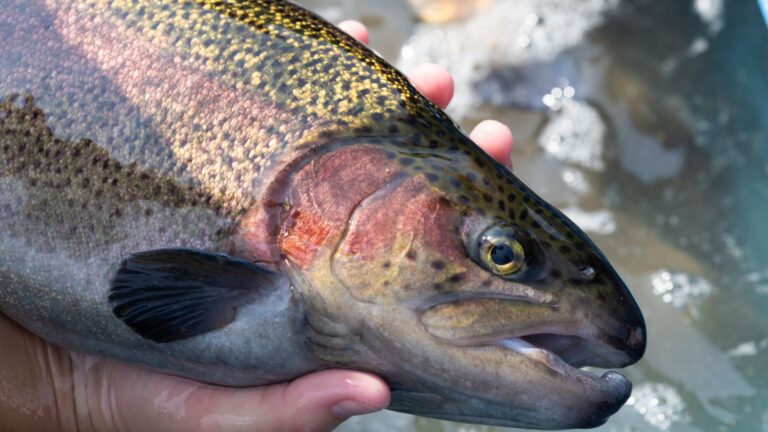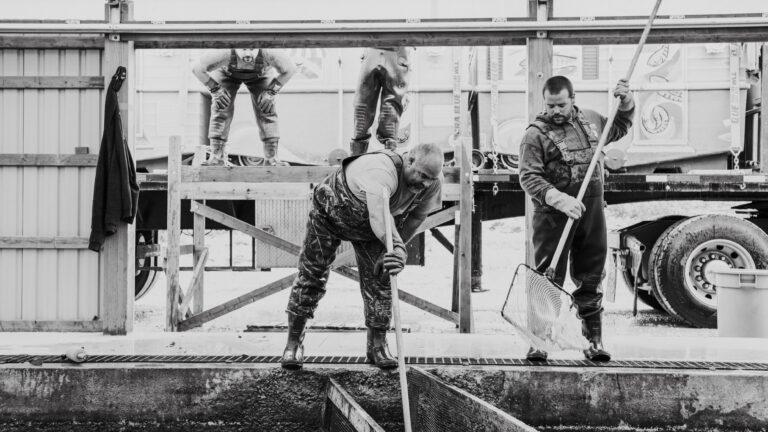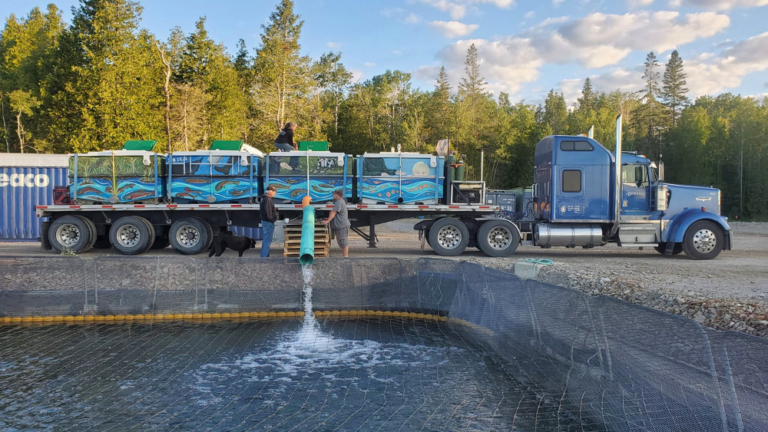
When other fish farmers visit Springhills, they’re often surprised by how much our fish swim. It’s not unusual for them to stand at the edge of one of our raceways or pens and say, half amazed, “Your fish are really moving!”
That reaction makes sense. For decades, the standard practice in fish farming was to keep things calm. The old-school theory went like this: if fish swim less, they burn less energy, which means more feed goes into growth. Keep the water flow low, keep the fish still, and they’ll grow bigger, faster.
At Springhills, we’ve never subscribed to that thinking. We raise fish in fast-moving water. Our land-based raceways rush with flow, and our lake pens are anchored in lively currents. The result? Fish that are constantly swimming, stronger, and, we believe, happier.
What Exercise Does for Fish
Over years of farming, our family has learned what the research now confirms: active fish are healthier fish. Moderate water velocity helps fish develop stronger immune systems, cleaner gills, and better oxygen exchange. They build more muscle, which creates a firmer, higher-quality fillet.
And despite what some might assume, the fish don’t waste feed energy by swimming. Studies compiled by the Ontario Ministry of Agriculture, Food and Agribusiness show that moderate exercise (about one body length per second) can actually improve feed efficiency and shorten the time to harvest.
Too little movement, on the other hand, can cause crowding, aggression, and stress. When water velocity is too low, salmonids become territorial and spend more energy fighting than swimming. When it’s too high, they experience exhaustion. The sweet spot—around one body length per second—mimics how salmon and trout behave in the wild and produces healthier, more uniform fish.
Nature Knows Best
Trout, salmon, and Arctic char are travelers by nature. In the wild, they swim long distances across lakes and up rivers. Their bodies are built for steady, aerobic movement. At Springhills, we let them keep doing what comes naturally, giving them the space and current to swim.
This approach aligns with recent findings that continuous, moderate swimming improves muscle structure, oxygen capacity, and even recovery from stress. It’s not just good welfare—it’s good farming.
Better for Fish, Better for You
For us, this isn’t about following trends. It’s about what we’ve seen firsthand over decades of farming. Fish raised in moving water are stronger, more resilient, and produce firm, flavourful fillets that chefs and home cooks love.
At Springhills, we believe farming should work with nature, not against it. That’s why we keep our water flowing and our fish moving—because healthy fish make healthy food, and the taste proves it.


